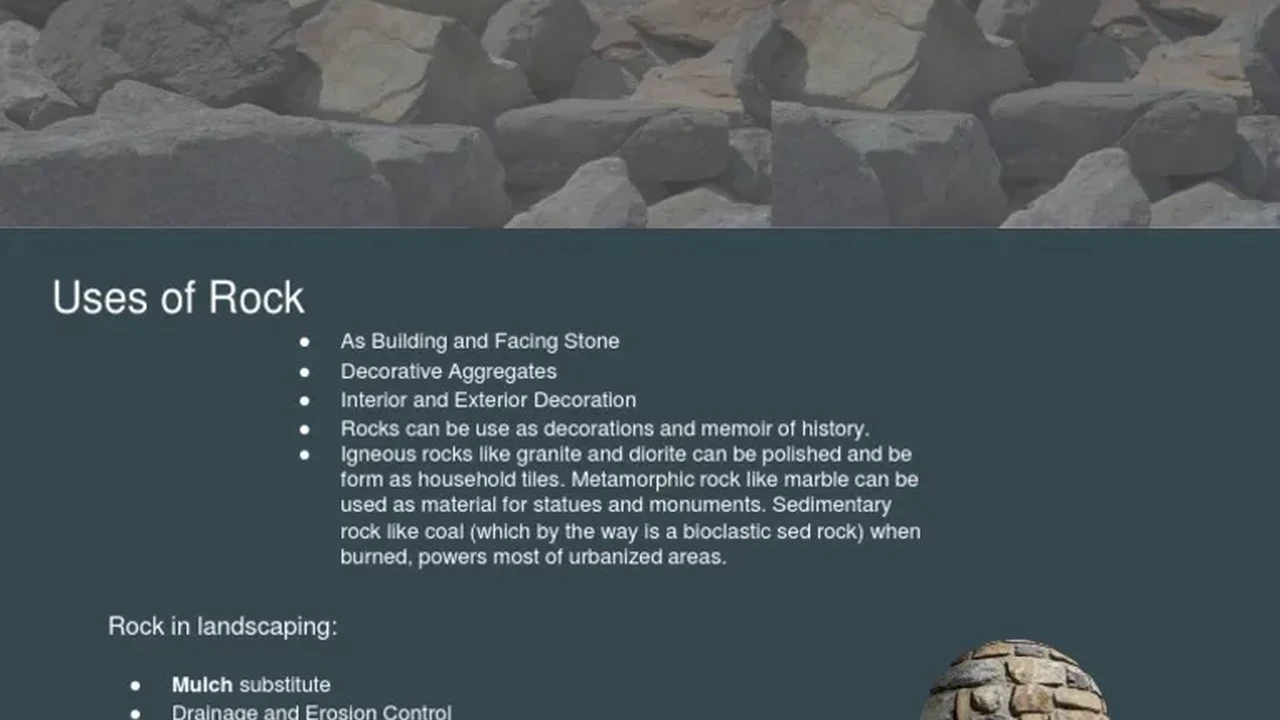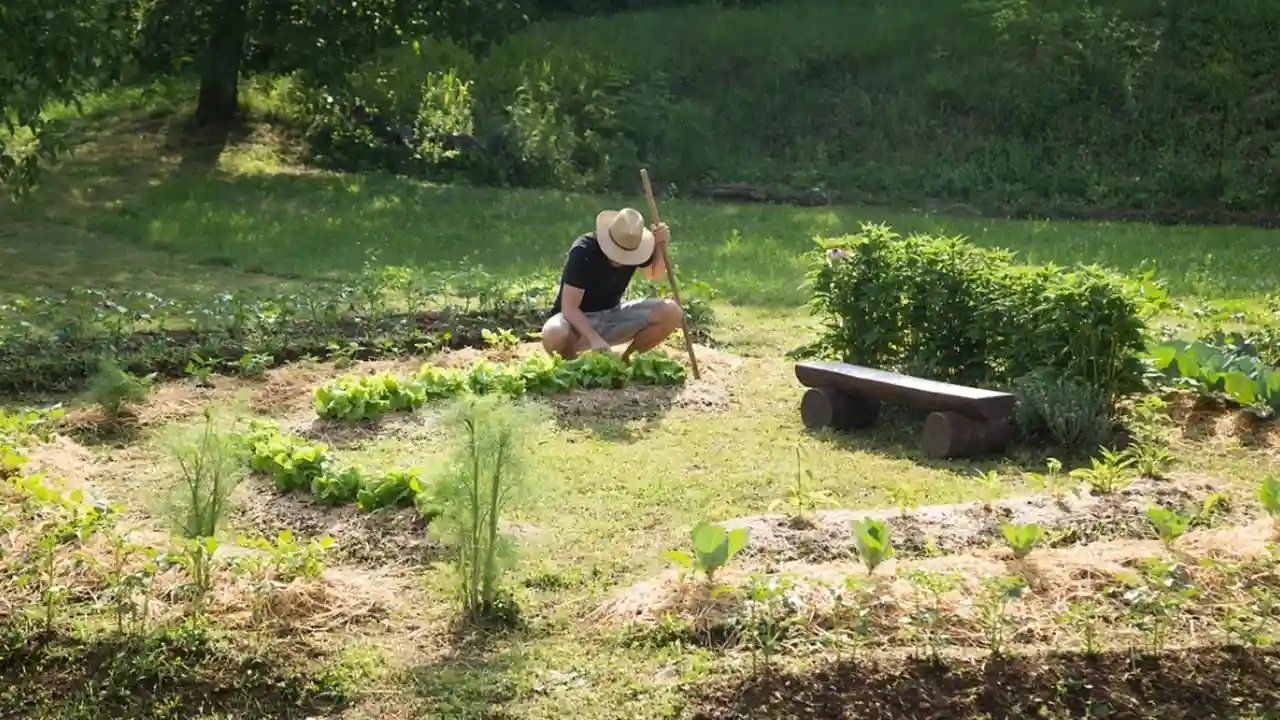Best Fertilizers for New Gardeners Top 3 Picks
Identify the top 3 fertilizers recommended for beginner gardeners. Learn how to nourish your plants for vibrant growth.

Best Fertilizers for New Gardeners Top 3 Picks
Welcome, budding green thumbs! So, you've got your garden bed set up, your seeds are in the ground, or your seedlings are happily nestled in their new homes. Now what? Just like us, plants need food to grow big, strong, and beautiful. That's where fertilizers come in. But walk into any garden center, and you'll be bombarded with a dizzying array of options. For a beginner, it can feel like trying to decipher a secret code. Don't worry, I'm here to simplify things. We're going to break down the best fertilizers for new gardeners, focusing on ease of use, effectiveness, and what your plants really need. We'll also dive into some specific product recommendations, their ideal uses, and what you can expect to pay.
Understanding NPK Ratios What Your Plants Crave
Before we jump into specific products, let's talk about the alphabet soup you'll see on every fertilizer bag: NPK. This stands for Nitrogen (N), Phosphorus (P), and Potassium (K). These are the three primary macronutrients plants need in the largest quantities. Think of them as the main courses in your plant's diet.
- Nitrogen (N): This is all about leafy green growth. If you want lush foliage, strong stems, and vibrant green leaves, nitrogen is your friend. It's crucial for photosynthesis.
- Phosphorus (P): This nutrient is vital for root development, flowering, and fruiting. If you're growing vegetables or flowers, phosphorus helps with strong root systems and abundant blooms and harvests.
- Potassium (K): Also known as potash, potassium helps with overall plant health, disease resistance, and water regulation. It's like the immune system booster for your plants.
The numbers on the bag (e.g., 10-10-10 or 5-10-5) represent the percentage by weight of N, P, and K, respectively. A 'balanced' fertilizer has equal parts of all three, like 10-10-10. Others might be higher in one nutrient, depending on what they're designed for. For beginners, a balanced fertilizer is often a great starting point, or one slightly higher in phosphorus for flowering and fruiting plants.
Organic vs Synthetic Fertilizers Which is Best for Beginner Gardeners
This is a common debate in the gardening world, and both have their pros and cons. For beginners, understanding the difference is key to making an informed choice.
Synthetic Fertilizers Quick Boosts for Plant Growth
Synthetic fertilizers are manufactured chemicals designed to deliver nutrients directly to plants in a readily available form. They are typically fast-acting and can provide a quick boost to your plants.
Pros of Synthetic Fertilizers:
- Fast-acting: Nutrients are immediately available to plants, leading to quick results.
- Precise NPK ratios: You know exactly what you're getting in terms of nutrient percentages.
- Often more affordable: Generally, synthetic fertilizers can be cheaper per application.
Cons of Synthetic Fertilizers:
- Can burn plants: Over-application can lead to 'fertilizer burn' due to high salt content.
- Don't improve soil structure: They feed the plant, not the soil. Long-term use can degrade soil health.
- Runoff potential: Excess nutrients can leach into groundwater or runoff into waterways, causing environmental issues.
- Require more frequent application: Because they are fast-acting, they often need to be applied more regularly.
Organic Fertilizers Building Healthy Soil Naturally
Organic fertilizers are derived from natural sources like plant matter, animal waste, or minerals. They work by improving soil health and feeding the beneficial microorganisms in the soil, which then slowly release nutrients to the plants.
Pros of Organic Fertilizers:
- Improve soil health: They add organic matter, which enhances soil structure, water retention, and aeration.
- Slow-release: Nutrients are released gradually, reducing the risk of burning plants and providing a steady supply.
- Environmentally friendly: Less risk of runoff and pollution.
- Support beneficial soil life: They foster a healthy ecosystem in your soil.
Cons of Organic Fertilizers:
- Slower results: It takes time for microorganisms to break down the nutrients, so results aren't as immediate.
- Nutrient ratios can be less precise: It's harder to know the exact NPK percentages.
- Can be more expensive: Often cost more per application than synthetic options.
- May have an odor: Some organic fertilizers, especially those derived from animal products, can have a noticeable smell.
For beginners, I often recommend a combination approach or starting with organic options to build healthy soil from the get-go. Healthy soil leads to healthy plants, which are more resilient to pests and diseases.
Top 3 Fertilizer Picks for Beginner Gardeners Easy and Effective
Now, let's get to the good stuff! Here are my top three recommendations for fertilizers that are easy to use, effective, and forgiving for new gardeners.
1. All-Purpose Granular Organic Fertilizer The Foundation Builder
Why it's great for beginners: This is your workhorse. An all-purpose organic granular fertilizer is fantastic for building healthy soil over time. It's slow-release, so you don't have to worry as much about over-fertilizing, and it provides a balanced diet for most plants. You typically work it into the soil before planting or sprinkle it around existing plants.
Recommended Product: Espoma Garden-tone Organic Plant Food
- NPK Ratio: Typically 3-4-4 or similar. It's a balanced, slow-release formula.
- Key Ingredients: Feather meal, bone meal, alfalfa meal, greensand, sulfate of potash, and other natural ingredients.
- Usage Scenario: Ideal for general garden use, including vegetables, flowers, trees, and shrubs. You can mix it into the soil when preparing new beds, or top-dress existing plants every 4-6 weeks during the growing season.
- Application: For new beds, mix 5 lbs per 100 sq ft into the top 4-6 inches of soil. For established plants, sprinkle around the drip line and gently scratch into the soil. Water thoroughly after application.
- Price Range: A 8 lb bag typically costs around $15-$25 USD. A 25 lb bag might be $30-$50 USD, offering better value for larger gardens.
- Pros: Builds soil health, slow-release, very forgiving, OMRI listed for organic gardening.
- Cons: Slower results than synthetic options, can have a slight earthy smell initially.
Alternative Product: Dr. Earth Organic All Purpose Fertilizer
- NPK Ratio: Often 4-4-4.
- Key Ingredients: Fish bone meal, alfalfa meal, kelp meal, and other beneficial microbes.
- Usage Scenario: Similar to Espoma Garden-tone, excellent for a wide range of plants and general soil improvement.
- Application: Follow package directions, usually involves mixing into soil or top-dressing.
- Price Range: Comparable to Espoma, an 8 lb bag around $18-$28 USD.
- Pros: Contains beneficial microbes, promotes strong root growth, 100% organic.
- Cons: Can be slightly more expensive, results are not immediate.
2. Liquid All-Purpose Organic Fertilizer The Quick Boost for Established Plants
Why it's great for beginners: Liquid fertilizers are fantastic for giving your plants a quick, gentle boost. They are absorbed through the leaves and roots, providing nutrients relatively quickly. Organic liquid options are less likely to burn plants than synthetic ones and are great for container plants or when you want to give a specific plant a little extra love.
Recommended Product: Alaska Fish Emulsion Fertilizer
- NPK Ratio: Typically 5-1-1. High in nitrogen, great for leafy growth.
- Key Ingredients: Deodorized fish emulsion.
- Usage Scenario: Excellent for leafy greens, young seedlings, and any plant that needs a nitrogen boost for lush foliage. Can be used as a foliar spray or soil drench.
- Application: Dilute 1 tablespoon per gallon of water. Apply every 2-4 weeks during the growing season. For foliar feeding, spray leaves until dripping. For soil drench, water around the base of the plant.
- Price Range: A 1-quart bottle typically costs around $10-$20 USD. A gallon can be $30-$50 USD.
- Pros: Fast-acting for an organic fertilizer, provides trace minerals, improves soil microbial activity.
- Cons: Can have a strong fishy odor (though the deodorized versions are much better), lower in phosphorus and potassium.
Alternative Product: Neptune's Harvest Fish & Seaweed Fertilizer
- NPK Ratio: Often 2-3-1.
- Key Ingredients: Hydrolyzed fish and seaweed extract.
- Usage Scenario: A more balanced liquid option than pure fish emulsion, great for overall plant health, flowering, and fruiting.
- Application: Dilute 1-2 tablespoons per gallon of water. Apply every 1-2 weeks.
- Price Range: A 1-quart bottle around $15-$25 USD.
- Pros: Combines benefits of fish (nitrogen, trace minerals) and seaweed (potassium, hormones for root growth), less odor than pure fish emulsion.
- Cons: Still has a slight odor, can be a bit pricier.
3. Slow-Release Granular Synthetic Fertilizer The Set-It-and-Forget-It Option
Why it's great for beginners: If you're looking for convenience and don't want to worry about frequent applications, a slow-release synthetic fertilizer is a fantastic choice. These fertilizers have a coating that gradually releases nutrients over several months, providing a steady supply to your plants without the risk of burning.
Recommended Product: Osmocote Smart-Release Plant Food (Outdoor & Indoor)
- NPK Ratio: Typically 15-9-12 or similar. A balanced formula.
- Key Ingredients: Coated synthetic nutrients.
- Usage Scenario: Excellent for container plants, hanging baskets, and garden beds where you want consistent feeding without frequent reapplication. Ideal for vegetables, flowers, and shrubs.
- Application: Sprinkle the granules around the base of your plants or mix into the soil when planting. The coating releases nutrients based on soil temperature and moisture. One application can last for 4-6 months.
- Price Range: A 1.25 lb container typically costs around $10-$15 USD. A larger 8 lb container might be $25-$40 USD.
- Pros: Extremely easy to use, long-lasting (reduces frequency of application), very low risk of burning plants, precise nutrient delivery.
- Cons: Synthetic (doesn't improve soil structure), can be more expensive per pound than basic synthetic fertilizers, not suitable for organic gardening.
Alternative Product: Jobe's Organics All-Purpose Fertilizer Spikes
- NPK Ratio: Often 4-4-4.
- Key Ingredients: Biozome (a blend of beneficial microorganisms), bone meal, feather meal.
- Usage Scenario: While not strictly 'synthetic' like Osmocote, these spikes offer a similar slow-release, set-it-and-forget-it convenience, but with organic ingredients. Great for trees, shrubs, and larger perennial plants.
- Application: Simply push the spikes into the soil around the plant's drip line. They slowly release nutrients as they dissolve.
- Price Range: A pack of 15 spikes around $10-$18 USD.
- Pros: Very convenient, organic, no mess, feeds slowly over time.
- Cons: Less flexible for precise nutrient control, primarily for established plants rather than seedlings.
When and How to Fertilize Your Garden Plants Timing is Everything
Knowing which fertilizer to use is only half the battle; knowing when and how to apply it is just as important. Over-fertilizing is a common beginner mistake and can do more harm than good.
General Fertilizing Guidelines for Beginner Gardeners
- Before Planting: If you're starting a new garden bed, incorporate an all-purpose granular organic fertilizer (like Espoma Garden-tone) into the soil. This builds a good foundation.
- During Active Growth: This is when your plants are putting on new leaves, flowering, or fruiting. This is the prime time for feeding.
- For Vegetables: Most vegetables are heavy feeders. Start with a balanced granular fertilizer at planting. Once they start producing flowers or fruit, you might switch to a fertilizer higher in phosphorus and potassium, or supplement with a liquid feed every few weeks.
- For Flowers: Similar to vegetables, a balanced granular fertilizer at planting, then a liquid feed higher in phosphorus once buds start forming can encourage more blooms.
- For Container Plants: These plants need more frequent feeding because nutrients leach out with watering. Use a slow-release granular fertilizer (like Osmocote) or a diluted liquid fertilizer every 1-2 weeks.
- Don't Fertilize Dormant Plants: If your plants are not actively growing (e.g., in winter), they don't need fertilizer.
- Always Read the Label: This is the golden rule! Every fertilizer product will have specific instructions for application rates and frequency. Follow them carefully.
- Water After Application: Especially with granular fertilizers, watering thoroughly after application helps dissolve the nutrients and carry them down to the roots, and prevents burning.
- Less is More: If in doubt, use less fertilizer than recommended. You can always add more later, but you can't take it away.
Signs Your Plants Need Fertilizer or Have Too Much
Your plants will often tell you if they're hungry or if they've had too much to eat. Learning to read these signs is a valuable skill for any gardener.
Signs of Nutrient Deficiency (Hungry Plants):
- Yellowing Leaves (especially older ones): Often a sign of nitrogen deficiency. The plant is pulling nitrogen from older leaves to support new growth.
- Stunted Growth: Overall slow or small growth can indicate a lack of nutrients.
- Poor Flowering or Fruiting: If your plants aren't producing many flowers or fruits, or they are small and underdeveloped, it could be a phosphorus or potassium deficiency.
- Purple or Reddish Leaves: Sometimes a sign of phosphorus deficiency, especially in cooler temperatures.
- Pale Green or Yellow New Growth: Can indicate an iron or other micronutrient deficiency.
Signs of Over-Fertilization (Too Much of a Good Thing):
- Brown or Scorched Leaf Tips/Edges: This is classic 'fertilizer burn' caused by too much salt from the fertilizer.
- Wilting, Even When Watered: Excess fertilizer can draw water out of the plant roots.
- Stunted Growth (Paradoxically): Too much fertilizer can actually inhibit growth.
- White Crust on Soil Surface: A buildup of salts from synthetic fertilizers.
If you suspect over-fertilization, flush the soil with plenty of plain water to wash away excess salts. For container plants, you can even submerge the pot in water for a while to leach out the excess.
Beyond the Big Three Micronutrients and Soil Health
While NPK are the stars of the show, plants also need smaller amounts of other nutrients, called micronutrients (like iron, magnesium, calcium, zinc, boron, etc.). A healthy soil ecosystem, rich in organic matter, will naturally provide many of these. This is another reason why organic fertilizers are so beneficial – they contribute to overall soil health, which in turn makes micronutrients more available to your plants.
Consider getting a soil test done every few years. Many local extension offices offer this service for a small fee. A soil test will give you a detailed report on your soil's pH, NPK levels, and micronutrient levels, providing precise recommendations for what your garden truly needs. This can save you money and prevent unnecessary fertilization.
Remember, gardening is a journey of learning and observation. Start with these basic fertilizer principles and products, pay attention to your plants, and you'll be well on your way to a thriving, vibrant garden. Happy growing!
:max_bytes(150000):strip_icc()/277019-baked-pork-chops-with-cream-of-mushroom-soup-DDMFS-beauty-4x3-BG-7505-5762b731cf30447d9cbbbbbf387beafa.jpg)






